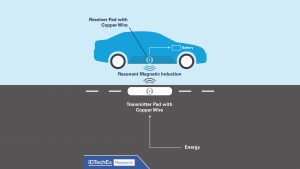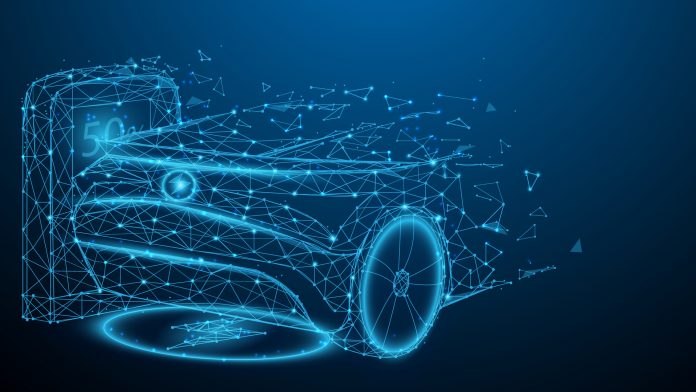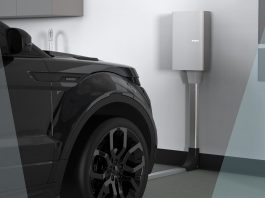Shazan Siddiqi, Technology Analyst at IDTechEx, discusses the advantages of wireless EV charging technology, and the barriers to the technology’s widespread deployment.
With countries across the globe aiming to reach their respective decarbonisation targets, electric vehicles (EVs) will play an increasingly important role. In 2021, EV sales were up by 109% more than the previous year, with 2.3 million EVs sold in Europe. To ensure that this growth rate continues, and decarbonisation targets are subsequently reached, there is now a greater demand for a more efficient EV charging infrastructure.
Wireless EV charging would be a game-changer for the automotive industry and would increase charging efficiency. Although the current process of plugging in your EV is easy, wireless EV charging is smoother, enabling the user to charge their EV without having to leave the vehicle.
In conversation with The Innovation Platform, Shazan Siddiqi, Technology Analyst at IDTechEx, outlines the processes behind wireless EV charging and examines the advantages and challenges of implementing this technology on a wide scale.

Analyst at IDTechEx
How does wireless EV charging technology work?
In wireless charging, power is transferred by magnetic fields using inductive coupling between coils of wire (inductive charging), or by electric fields using capacitive coupling between metal electrodes (capacitive charging). Inductive charging is the most widely used wireless technology. Magnetic resonant wireless charging will dominate the market and is the current standard globally for EVs.
For EVs with wireless charging, the car batteries can be charged when parked above the charging pad without being plugged in. It could become an essential component to future autonomous vehicle ecosystems.
The wireless charging system comprises of the vehicle and ground subsystems. The vehicle side of the wireless charging system is made up of a receiver pad and an electronics module. High-frequency alternating current (AC) is converted to direct current (DC) which directly charges the vehicle’s battery. The ground side of the system consists of a charging pad installed in the pavement, which is connected to an electronics cabinet. High-frequency AC power is generated by the electronics cabinet and transmitted by the charging pad to the vehicle.
What are the advantages of wireless EV charging? How will wireless EV charging increase EV uptake?
Wireless EV charging technology is interoperable, convenient, and harder to vandalise compared to traditional public charging units. The user never has to step out of the EV to deal with different connectors, heavy cables, or hassle with a not-so-friendly user interface to make payments. The entire process of EV charging is simplified, offering a much better end-user experience. The driver simply aligns the car with the transmitter pad on the ground and charging begins automatically.
The technology is especially useful for electric buses, that are essential candidates for electrification. Wireless charging lowers the cost of operation, results in more affordable buses with smaller batteries, and extends the lifetime of batteries.

Wireless EV charging has the potential to increase EV uptake. The market is still very young, and most projects are in pilot stages. However, the proof of concept has been achieved and a residential and public target base is now attainable if serial production and integration with original equipment manufacturers (OEMs) can occur.
What is required of wireless EV charging infrastructure to meet the demand for EVs?
Wireless EV charging technology must be factory installed and infrastructure must be deployed in areas where EVs are most likely to operate. A good example is a taxi rank, where wireless charging pads embedded into the ground can charge the EV whilst the driver waits for a new customer.
From a technical perspective, the wireless charging power levels must increase. Currently, the fastest power delivery for passenger EVs via wireless charging is achieved at 11kW by WiTricity. This is comparable to Level 2 charging, which is not suitable for quick top-ups along highways.
Inductive supercharging for commercial vehicles, where wireless charging power is approximately 200kW on average, is achieved by a few players such as Momentum Dynamics, Wave, and Tesvolt, and is only made possible due to innovative coil designs and larger surface areas of the pads.
However, wireless charging power levels for passenger cars are inherently limited and do not compare to the throughput of a DC fast charging station.
What are the challenges facing the widespread implementation of wireless EV charging? How can policymakers and automotive companies ensure that wireless EV charging can be rolled out on a large scale?
The drawbacks are that the method only works over short distances, and the power transmitter and power receiver need to be in alignment, so in terms of flexibility, it is effectively no different than using a charging station with a connection.
SAE International has published a revised version of the ‘Recommended Practice SAE J2954’- the standard for wireless power transfer (WPT) for EVs of up to 11kW power levels. A much more powerful WPT is being defined in J2954/2 for 500kW charging for heavy-duty vehicles which have the necessary room to mount a larger induction plate. These standards need to be published before wide-scale deployment can be achieved across different EV segments.
Automotive OEMs must start factory fitting wireless charging equipment onto the vehicles rather than current retrofits. IDTechEx spoke to WiTricity, who are market leaders in this space, and found that the factory cost for adding wireless charging is $750 to $1,000, and over the next three to four years this will reduce significantly. If achieved, this should enable the technology to go from being a ‘convenience upgrade’ to a mass-market, standardised charging solution.
Do you think wireless EV charging technology will be implemented fast enough on a global scale to meet the goals of the clean energy transition?
Wireless EV charging technology is stuck in the early market, with enthusiasts and visionaries pushing for it. To penetrate the mainstream market, series production must be achieved and integrated by the OEMs. IDTechEx believes in a stepwise expansion for the wireless charging market opportunity: intellectual property (IP) transfer from pioneers, passenger vehicle product development and integration, and finally, high-power product development for commercial segments.
Shazan Siddiqi
Technology Analyst
IDTechEx
www.IDTechEx.com/EVCharge
https://www.linkedin.com/in/shazansiddiqi/
Please note, this article will also appear in the tenth edition of our quarterly publication









